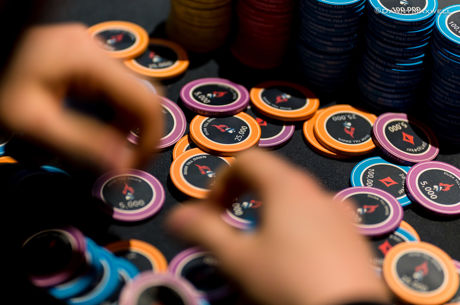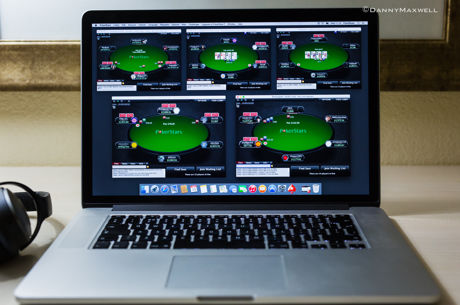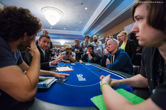Player Profiling: Four New Poker Archetypes
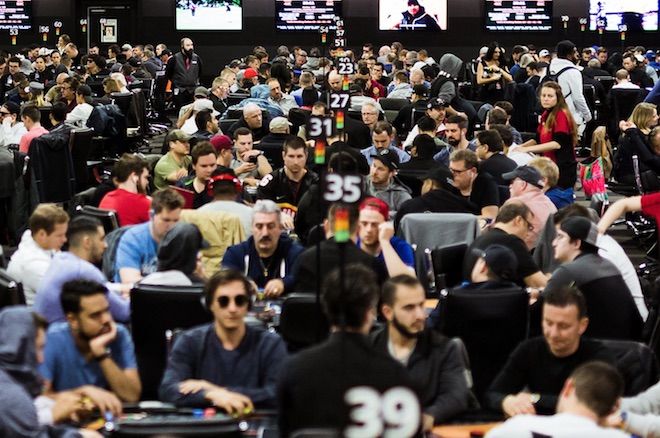
I became a serious poker player in the early 1990s when limit stud and limit hold'em were the most popular games. In those days, there were three well known poker "archetypes" that survive to this day.
You are almost surely familiar with them �� the "rock," the "maniac" and the "calling station."
Each of those names captured an entire category of player one often faced at the tables. A "rock" was (and is) an extremely tight player. A "maniac" is an extremely loose and aggressive player. And a "calling station" is extremely loose and passive, often checking and calling and very seldom betting and raising.
By the early-to-mid 2000s the game had changed, with no-limit hold'em swiftly becoming the most popular game. Soon the game became more sophisticated, with different, creating a need for more nuanced categories to describe players.
"Tight-aggressive" ("TAG") and "loose-aggressive" ("LAG") joined the lexicon as phrases describing certain types of players. So did "nits" (a "rock" by another name), "LAGtards" (self-explanatory and more than a little politically incorrect), and "donkeys" (replacing the old school "pigeon" or "fish").
Sure, there were other words thrown about to describe poker players, but as far as archetypes or primary categories were concerned, that just about covered it.
But the times they are a changing (again), meaning some new archetypes are needed. I've taken the time to identify a few that more closely resemble some of the more complex types of players we face today, especially at the lower limits of $1/$2 and $2/$5 no limit hold'em.
Sticky Bun
A "sticky bun" is a rock of sorts. But it's a rock who has a very hard time folding to action after the flop.

Preflop he's a nit, but postflop he's the antithesis of weak-tight, c-betting with a very weak range and then calling action from his opponents with a similarly weak postflop range.
He's the type of player you want to float with a broad range, expecting him both to continue the action after the flop, even if he hasn't hit anything, and then to call your return fire if you hit a monster.
You want him at your table. Hey, who doesn't like a sticky bun?
Roly Poly
This player type is based on that suburban lawn insect that fascinates children. A "roly poly" is only about a centimeter or so long, has multiple legs, and typically is seen crawling slowly through strands of grass.
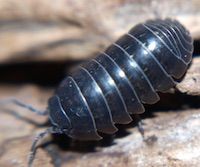
But as soon as one experiences any danger in the form of a stick or a finger coming its way, it rolls up into a tight sphere the size of a small ball bearing, remaining in that form until many minutes after the danger abates.
Similarly, a poker roly poly has one move �� preflop only. He may raise light, and it may be a fairly large raise. But come the flop, if he hasn't hit it, he'll roll up and go away in the face of any action.
You can float him from any position. If you're out of position, a small donk bet on the flop will almost always scare him away unless he actually hit. If you're in late position, bet when he checks and fold when he bets. He, too, will add to your bottom line.
Chirper
Here is another, different example of a generally poor player, in this case one who one craves some action preflop. The "chirper" sees others raise preflop, so he does so, too, but but without any real purpose or meaning.

His move is a small raise, typically from any position, with a huge, weak range, just to spice the pot a little. It's preflop noise, signifying nothing �� just the chirping of a little bird, and should be largely ignored.
Call, raise or fold as you would an unraised pot (with allowances for the slightly larger size of the pot). If you're a fairly tight player, the chirper is a mild annoyance, meaninglessly inflating pots. You'll do fine with him at the table as long as you can ignore his noise, and have a bankroll to absorb the slightly bigger game.
Butterfly
Finally, the "butterfly" is a solid player who likes to float the flop, hoping to chill action or take the pot away on the turn.

Against such players, you should be less inclined to c-bet with medium strength or weaker hands out of position, and more inclined to reraise on the turn and river if you read him for having made this habitual-for-him float move.
But be careful. Good floaters are often very good players. Though they float like a butterfly, they can come back and sting you like a bee.
Conclusion
Profiling players and being able to recognize which categories they fit into is an important part of winning poker. The clearer your picture of the habits of your opponents, the better able you will be to exploit them.
Without making too much of these new differentiated categories, I think you'll find that they may help you recognize and then exploit some of the typical behavior patterns of poker players today.
They may also prompt you to think of other archetypes for the characters you see at the table. If you come up with any, I'd be interested in knowing what they are.
Ashley Adams has been playing poker for 50 years and writing about it since 2000. He is the author of hundreds of articles and two books, Winning 7-Card Stud (Kensington 2003) and Winning No-Limit Hold'em (Lighthouse 2012). He is also the host of poker radio show House of Cards. See www.houseofcardsradio.com for broadcast times, stations, and podcasts.
Photos: "Sticky buns..." (adapted), Amber DeGrace, CC BY 2.0; "Roll E Pole E" (adapted), Frank Boston, CC BY 2.0; "Chirp!" (adapted), hedera.baltica, CC BY-SA 2.0; "Butterfly" (adapted), Conal Gallagher, CC BY 2.0.


